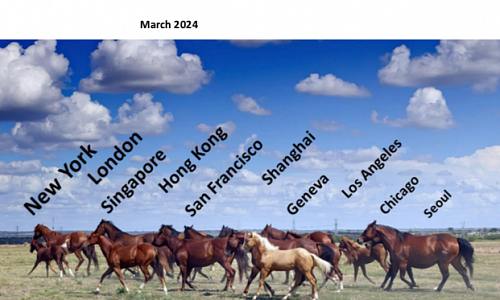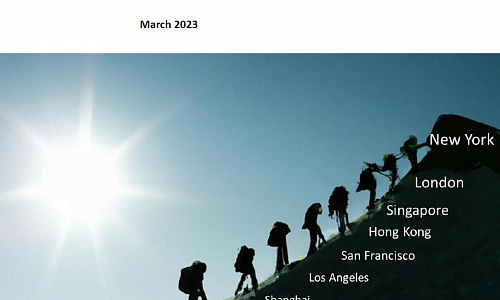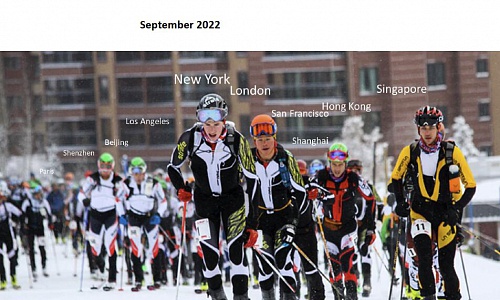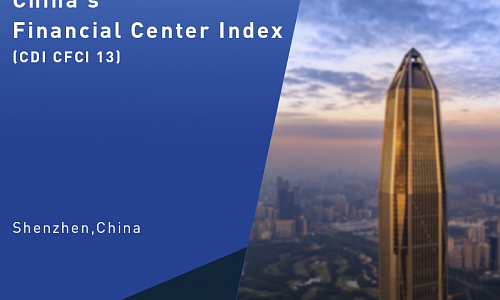The 13th Shanghai-Tianjin-Shenzhen Forum
Information

Three issues were discussed during the forum including "Urban Renewal and Development", "Urban Management and Development" and "The Bay Area Economy and Development ".
Venue: Social Sciences Innovation Base, Shanghai, China
Host: CDI, Shanghai Academy of Social Sciences, Binhai Research Institute in Tianjin
Theme: Urban Renewal and Bay Area Economy
Experience of the German Economy
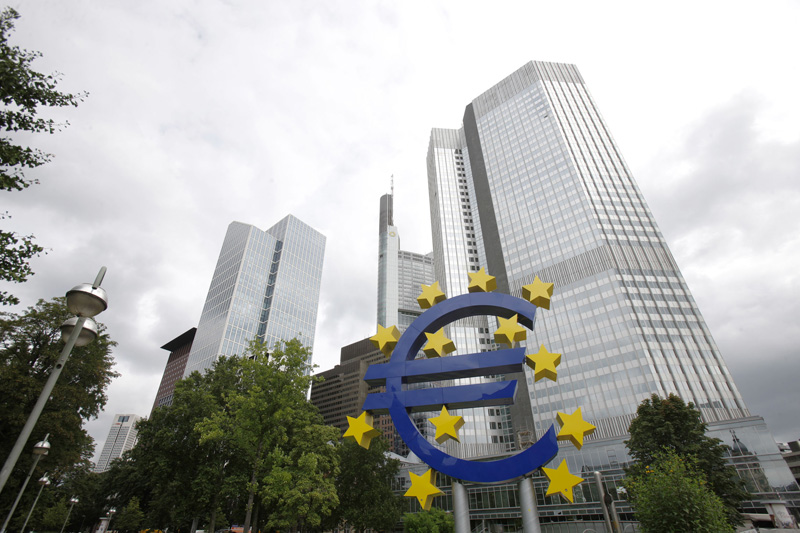 Author: Peter Bofinger, Professor for Monetary and International Economics, Würzburg University, and a Member of the German Council of Economic Experts
Author: Peter Bofinger, Professor for Monetary and International Economics, Würzburg University, and a Member of the German Council of Economic Experts
Editor’s Note: At the China Industrial Finance Forum 2017 on November 17 in Jinan, Professor Peter Bofinger shared his views on the successful experience of the German Economy. Here are excerpts from his speech:
Germany is among the top ten economies in the Global Competitiveness Report provided each year by the World Economic Forum. In this ranking, Germany is especially high in terms of innovation and business sophistication. Germany has one the lowest unemployment rate among the OECD countries and sound public finances compared with other advanced economies.
Why is the German economy so successful? Germany has a specific economic model which was shaped by Ludwid Erhard, the father of Germany’s market economy, after the WWⅡ. His concept can be labeled in his motto that is “prosperity for all”. The idea was that in order for a country to prosper it means that growth has to be shared by all. Growth is important, but growth has to be widely shared.
How can the concept be translated into the German economic system? What really matters when you decide an economy is the relationship of government influence and market force. For example, the Anglo-Saxon countries have low government influence and strong market influence, and in the Scandinavian countries, market influence is relatively small compared with government. Germany is in the middle, not too much government, not too much market, and it is a very balanced approach. It explains why Germany is so successful.
The approach also explains the success of a German model that provides workers with relatively high security. Unemployment protection of workers in Germany is rather high. Good protection of workers is not something negative for growth and it is a positive feature. Workers and employers see themselves as partners; there is no confrontation but cooperation between them. It is really helpful for Germany. The intuitional framework is called co-determination which means the boards of large companies compose of 50 percent of workers’ representatives and 50 percent of shareholders’ representatives. It is important for the solid environment of the German economy, especially in recessions.
Germany also has a special industrial landscape which is rooted in the German history. Until the beginning of 19th century, Germany was composed of independent small states, so Germany is a much decentralized country. It is also reflected in the industrial structure. Germany has many companies spread across the country. Some of them are even global leaders but they are in the countryside. Why can these family companies adjust themselves over time and still remain successful? The family model is very helpful, because they have long-term perspective. They do not depend on short-term capital market, but they have their long-term vision of how to be successful.
What is the financial system for this decentralized structure of Germany? It is called a three-pillar system which is very robust in times of crisis. One pillar is private banks. The second one is savings banks which are owned by the local authorities and spread all over the country. This decentralized banking system really helps small enterprises get the money. In addition, we have corporative banks which are owned by small investors and mainly exist in major cities. Both saving banks and cooperative banks are not listed on the stock exchange. The three pillars make up a stable system, because it is diversified and it is on the local basis that money is provided for the local companies.
Is Germany really so good? The biggest test for the German economy is the German unification in 1990. When the Berlin Wall came down, we suddenly have 60 million East Germans with an economy that was extremely not completive, while the West German economy was really able to provide social security and infrastructure investment. The unification has been successfully managed, which is a sign of strength of the German economy.
The German economy’s strength is obvious if you look at how we manage the globalization. Germany has benefited from the rapid process of globalization because we have the right products that are needed for industrialization. Compared with other advanced economies, the German economy is very open and has successfully managed the challenge of globalization, which shows the strength of our economy.
Germany has been able to retain the manufacturing base and it is still one of the very strong manufacturing economies. Manufacturing matters.
We have also realized the potential of digitalization. We are one of the economies which intensively use industrial robots. Digitalization is not something afraid of and it does not destroy jobs but provide new opportunities.
What are the lessons for China?
Social protection is a blessing not a curse, because it provides motivation for workers. Good labor relations matter for the performance of firms.
Small can be beautiful. Small and medium-sized companies are successful because they are more flexible and transparent and have low transaction and information costs.
Stock markets are good, but we must be careful. What matters for successful economies is long-term vision, while dependence on stock markets nurtures short-termism.
Globalization and digitalization are beneficial for the wealth of nations, but they do not generate prosperity for all. We need government to use them in the right way so as to produce prosperity for all.
China’s Internet Finance: Risks and Regulation
 Author: Fan Gang, President, CDI
Author: Fan Gang, President, CDI
Editor’s Note: Internet finance, while injecting new vitality into economic development, has also brought with it inevitable risks, which calls for new models of internet finance regulation.
Online shopping, internet finance and telecommunication technologies have brought various benefits to the Chinese economy, such as fueling the development of the manufacturing sector, providing financial support for small and medium enterprises, and promoting consumer finance. Compared to developed countries, China’s internet finance is developing well. There are several reasons for this. First, the relative backwardness of China’s commercial and financial industries in the past created a huge space for the emergence of internet finance. Second, Chinese consumers’ awareness of privacy protection is not as high as their counterparts in western countries. Third, the Chinese government has adopted a tolerant stance towards innovation, entrepreneurship, the application of new technologies, as well as new business patterns and models, facilitating the growth of internet finance. In addition, China’s vast consumer market has provided excellent opportunities for growth.
The development of internet finance has pros and cons, which, while creating benefits, has also brought negative impacts such as phishing and fraudulent activities, etc., all of which have made regulation on internet finance highly relevant. We need to adopt a mixed supervision system which can penetrate into different industries related to internet finance. Moreover, the partnership between governments and enterprises shall also be encouraged. Moderate and effective regulation by the government will help businesses develop better. As the regulator and the regulated share common interests, their partnership and collaboration will contribute to forming a self-disciplined regulation mechanism, which is in the interest of the long-term sound development of China’s internet, e-commerce, and electronic finance, etc.
Shenzhen to Build a New Regional Innovation System
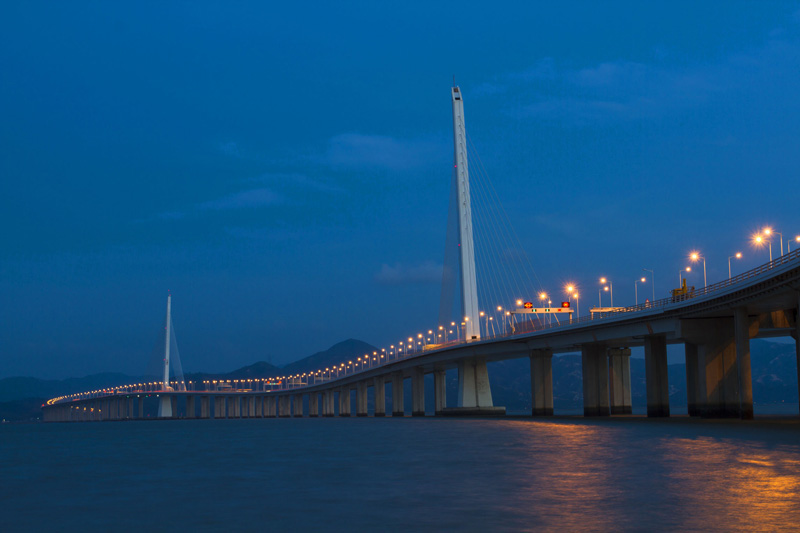 Author: Guo Wanda, Executive Vice President, CDI
Author: Guo Wanda, Executive Vice President, CDI
Editor’s Note: In the Guangdong-Hong Kong-Macao Greater Bay Area, Shenzhen has a unique advantage of innovation. Shenzhen shall give a leading role to innovation and strive to build a new regional innovation system.
Shenzhen is a metropolis featured with openness and innovation. Shenzhen is home to a large number of highly competitive private businesses which focus on innovative and creative industries. Moreover, the high efficiency of Shenzhen’s government, favorable business environment, large numbers of talents have all contributed to Shenzhen’s vigorous economy. Shenzhen shall give a leading role to innovation for a better spill-over effect in promoting the shared development for other cities in the greater bay area. The following measures shall be taken: first, to build a regional innovation system featuring industry-academia collaboration research; second, to put in place an industrial chain incorporating venture capital, innovative technologies, and talents for innovation; third, to facilitate the aggregation of industries, talents and capital.
In the greater bay area, Shenzhen can foster benign competitive relationships with other core cities like Guangzhou, Hong Kong and Macao in the greater bay area. Open and pragmatic cooperation will be carried out between Shenzhen and Guangzhou, in particular the establishment of the Guangzhou-Shenzhen Science and Technology Innovation Corridor. Hong Kong is an international hub for finance, trade and shipping with sound basis for cooperation with Shenzhen in industries, talents and technology, etc. Macao is a global center for tourism and leisure, as well as a well-functioning platform for one-stop MICE services. To achieve mutually complementary cooperation, Macao should combine these strengths with Shenzhen’s strengths in internationalization.
Moreover, integrated industrial chains have been formed among Shenzhen, Dongguan and Huizhou, and the collaborative development capitalizing on the advantages of the three cities is sure to exert positive influence on the growth of the greater bay area as a whole. The division of city functions among the three cities, together with close collaboration and partnership among industries, will help promote the Shenzhen-Dongguan-Huizhou city group. Differences in cost have made them highly complementary to each other in industrial division and city functions. A better coordination mechanism among Shenzhen, Dongguan and Huizhou will serve as an role model for other cities in the greater bay area. With the further improvement of transportation networks in the Guangdong-Hong Kong-Macao Greater Bay Area, there will be higher mobility of different economic factors, enabling Shenzhen to reach out further in the overall development of the greater bay area as a regional growth engine.
China’s Economy Promises Bright Prospect in the New Era
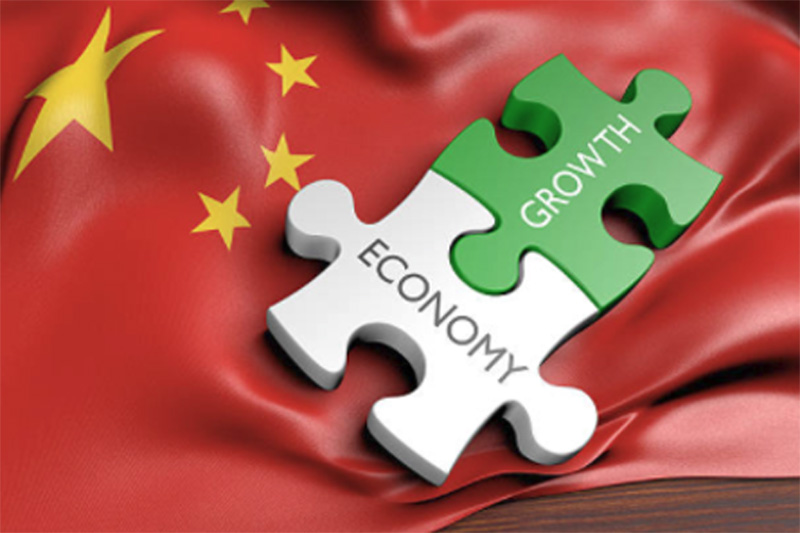 Author: Fan Gang, President, CDI
Author: Fan Gang, President, CDI
Editor’s Note: China still has huge potential for economic growth, as the domestic supply side reform and growth in consumption further promote the development of China’s economy. Enterprises will also meet new opportunities in the period of economic transformation.
During the period from 2011 to 2016, China faced rather strong downward pressure on its economy. Stimulated by the supply side reform and domestic demand, however, the prospect of China’s economy remains encouraging. In the next round of economic growth, there will be more high-tech innovation elements, and China’s economy will embrace growth with a better quality. At the same time, the domestic supply side reform and growth in consumption will continue to fuel China’s economy.
The report of the 19th National Congress of the CPC put forward the supply side structural reform as a central task in facilitating economic development towards better quality and higher efficiency, while industrial restructuring and transformation is a major challenge for the supply side reform. In the future, industries will continue to climb the value chain towards the middle and high end of it. In addition, the future of China’s economic structure will witness a shift to consumption as a new driver, with consumption of services also expecting faster growth. At the same time, other drivers for consumption growth are also gradually coming into play, including the steady growth of national income, continuous improvement of social security, sustained development of consumer credit, and increasingly diverse consumer needs.
However, we should also be concerned about the overheating of the Chinese economy. The overheated economy is because of technological progress and institutional change. When the economy becomes overheated, we often encounter periodic problems such as overcapacity, stock backlog, debts, etc. Two conditions must be met if the Chinese economy wants to ensure a soft landing: first, when inflation happens, the national government shall take timely measures to suppress excessive bubbles; second, economic and administrative measures shall be adopted as two pillars to control economic growth within a proper range. For enterprises, how to adapt to national economic transformation and restructuring by adopting appropriate business strategies is important if they are to have sustainable development.
Shenzhen Development Approach in New Era after 19th CPC National Congress
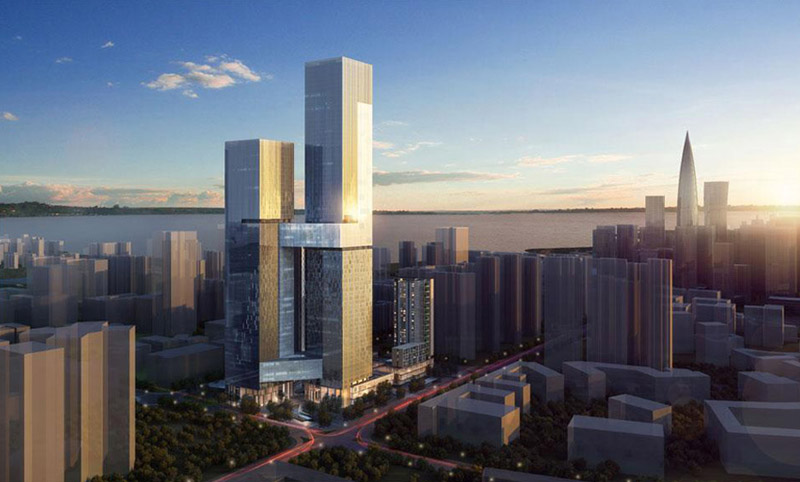 Editor’s Note: CDI experts gave suggestions to the development approach for Shenzhen after the 19th CPC National Congress.
Editor’s Note: CDI experts gave suggestions to the development approach for Shenzhen after the 19th CPC National Congress.
Housing Should Be for Living in, not for Speculation
Land shall be used for housing construction. To solve the housing problem, we should trace back to the factor of land. What Shenzhen needs is a residential land supply regime instead of improved housing construction ability. Therefore, Shenzhen shall make a series of adjustments to its land management regime by establishing a residential land supply regime that can meet the housing needs of Shenzhen residents.
To Introduce Shenzhen Special Economic Zone Model along the Belt and Road
The Belt and Road Initiative has been well-received by many developing countries. These countries believe that the successful development model of Shenzhen Special Economic Zone is duplicable and helpful to transplant. When opening up to the countries along the Belt and Road, Shenzhen needs to share its success story of the Special Economic Zone model to the world.
To Achieve Development in Fundamental Scientific Research
Despite of its high ranking in terms of science and technology innovation, Shenzhen should clearly recognize that innovation does not only refer to technology industrialization but also basic research. Therefore, there is still plenty of room for improvement in terms of basic theoretical research and disruptive innovation. Four Nobel Prize winners have established their laboratories in Shenzhen with remarkable achievements.
To Contribute to China’s Opening-up
Shenzhen should seek for service trade-driven development and integrate its service trade into the global service sector. Shenzhen should also accelerate research on and implementation of projects such as free trade ports and cross-border cooperation zones What’s more, Shenzhen should provide excellent public services, maintain market rules and mechanism, and create a world-class business environment and attract high-quality business resources across the world.
Opening Finance – the Right Way
 Growth was relatively stable in October. Industrial output was up 6.2% y/y, almost the same as in previous months. Yet key growth drivers weakened. Fixed asset investment was up 5.8% y/y, slightly above the nadir, but lower than the investment price level. So real investment growth is still negative, a key challenge for the future.
Growth was relatively stable in October. Industrial output was up 6.2% y/y, almost the same as in previous months. Yet key growth drivers weakened. Fixed asset investment was up 5.8% y/y, slightly above the nadir, but lower than the investment price level. So real investment growth is still negative, a key challenge for the future.
Retail sales of consumer goods were up 10% y/y in nominal terms, and 8.6% y/y in real terms. Both were the weakest growth figures of the year. Exports were up 6.9% y/y, declining from Q1 and Q2. We expect exports to continue to slide. Furthermore, the growth rate of industrial export delivery value could dip below zero next year. Imports were up 17.2% y/y, maintaining their fast growth trend, up 2.6 pps from Q3.
Producer prices continue to appreciate. The ex-factory price index of industrial output was up 6.9% y/y, and PPI was up 8.4% y/y. They grew 0.7% and 0.9% m/m, respectively. Among the composition of industrial output prices, industrial processing prices were up 7.6% y/y, a new high.
CPI was up 1.9% y/y, a slight increase, though stable from previous months. By the end of October, M2 was up 8.8% y/y, a new low, reflecting a continuation of monetary tightening.
There have been three major changes to financial regulations. On November 10th, it was announced that the government would relax or eliminate ownership limits in commercial banking, securities, futures, asset management and insurance. The same day, a cabinet-level financial stability committee was established, putting financial stability in an unprecedentedly high position. On November 19th, the Central Bank, together with all other financial regulatory bodies, issued a new guideline to more strictly regulate the asset management businesses.
Financial openness can increase the efficiency of capital allocation domestically, and can further lift the real economy’s productivity, by at least increasing financial competition among financial institutions. The Chinese government has also learned from Western countries’ past financial crisis history, by making financial stability a higher priority, since openness and liberalization are usually accompanied by instability. We view this openness with a prudential regulatory approach as a very positive direction.
19th Congress Sends Positive Signals
 Growth in Q3 was stable, though slightly lower. GDP was up 6.8% y/y, down 0.1 pps from Q2. Industrial output rose 6.3% y/y, down 0.5 pps from Q2, but still higher than in Q3 2016. However, industrial output in real terms might be worse than official statistics indicate.
Growth in Q3 was stable, though slightly lower. GDP was up 6.8% y/y, down 0.1 pps from Q2. Industrial output rose 6.3% y/y, down 0.5 pps from Q2, but still higher than in Q3 2016. However, industrial output in real terms might be worse than official statistics indicate.
Since the beginning of 2017, fixed asset investment has been weakening. It rose 9.2% y/y in Q1, then fell to 8.3% y/y in Q2, and fell further to 5.8% y/y in Q3. After taking out the price factor, fixed asset investment fell -0.6% y/y, down 5.1 pps from Q1. But the good news is that paid-in investment funds rose by a relatively large 6.7% y/y. In Q3, the real estate market quickly cooled. The sales area grew only 1.2% y/y, down 12.8 pps from Q2. Sales revenue rose 3.9% y/y, down 15.4 pps from Q2.
Retail sales of social consumption goods were up 10.3% y/y in Q3 in nominal terms, and up 9.2% y/y in real terms, both down 0.5 pps from Q2. Total imports rose 14.6% y/y, flat on Q2, still a fast-growing trend. We expect imports will continue to rise. Exports rose 6.9% y/y, down 2.3 pps from Q2.
Producer prices continue to appreciate. The ex-factory price index of industrial products rose 6.9% y/y, up 1.4 pps from June. PPI rose 8.5% y/y, up 1.2 pps from June. At the end of September, the M2 money supply rose 9.2% y/y, down 0.2 pps from June. M1 rose 14% y/y, down 1 pps from June.
China’s Communist Party held its 19th National Congress this week, where it elected its new leadership and set its main policy themes for the next five years. President Xi Jinping will remain in his post, indicating a continuation of the current policy line. This announcement has significantly reduced policy uncertainty. In his report, Xi said the next five years’ main themes would be openness, entrepreneurship and resolving inequality.
Further openness is not only an extension of Belt and Road program, but also means further welcoming FDI and financial liberalization. These areas are viewed among economists as priorities for development. Entrepreneurship is for productivity growth, which is expected to be the key growth driver, rather than investment. Inequality is a primary issue for political stability in China. The government report specifically mentions IT. The extensive use of IT may have positive implications for the economy, as IT not only improves efficiency, but also may empower the central government. It can deliver sufficient information and monitoring ability for the conduct of government policy, and lead to better policy outcomes. We are positive on China’s future growth, given the government’s objectives -- but of course we need to watch closely, to see how these objectives will be implemented.
Dr. Qu Jian Attends the Third Investing in Africa Forum
 During September 25 to 27, Vice President Dr. Qu Jian attended the Third Investing in Africa Forum and gave a presentation themed on “Promoting Africa Leapfrogging through Innovation” at Parallel Session: Special IATTA Roundtable. Dr. Qu Jian noted that to achieve leapfrogging development, African countries should pay attention to the life-cycle management of special economic zones by legislation, industrial planning, spatial planning, investment feasibility studies, operation schemes and financing schemes before the construction.
During September 25 to 27, Vice President Dr. Qu Jian attended the Third Investing in Africa Forum and gave a presentation themed on “Promoting Africa Leapfrogging through Innovation” at Parallel Session: Special IATTA Roundtable. Dr. Qu Jian noted that to achieve leapfrogging development, African countries should pay attention to the life-cycle management of special economic zones by legislation, industrial planning, spatial planning, investment feasibility studies, operation schemes and financing schemes before the construction.
The Third Investing in Africa Forum was co-organized by Republic of Senegal, Ministry of Finance of the People’s Republic of China, China Development Bank and World Bank Group. Under the overarching theme of Leapfrogging through Innovation, six key topics will be discussed: (i) Energy; (ii) Agriculture and Agribusiness; (iii) Information and Communication Technologies; (iv) Education; (v) Finance; and (vi) Governance and Sustainability. The forum will also mark the official debut of the “Investing in Africa Think Tank Alliance” (IATTA), a platform to synergize the intellectual capabilities of research centers and the capital strengths of development finance institutions to promote sustainable and inclusive development in Africa.
Ratings Downgrade is a Misleading Overreaction
 Growth weakened in August. Industrial output was up 6% y/y, down 0.4 pps from July, and down 0.9 pps from Q2, which represented its lowest level of the year. Fixed asset investment, up 4.9%, was likewise at its lowest level of the year, down 3.4 pps from Q2.
Growth weakened in August. Industrial output was up 6% y/y, down 0.4 pps from July, and down 0.9 pps from Q2, which represented its lowest level of the year. Fixed asset investment, up 4.9%, was likewise at its lowest level of the year, down 3.4 pps from Q2.
But the ex-factory price index of industrial products rose 6.3% y/y, and was up 0.8 pps from July. PPI rose 7.7% y/y, up 0.7 pps from July. The producer price appreciation is hard to reconcile with weakening growth. We view economic fundamentals as sound, but macroeconomic uncertainty, especially driven by negative media reports, is slowing investment.
Retail sales of social consumption goods were up 8.9% y/y, down 0.7 pps from July, and down 0.8 pps from Q2. The weak retail sales can be partially explained by the crowding-out effect brought by booming housing prices. Exports were up 5.5% y/y, down 1.7 pps from July, and further down 3.7 pps from Q2. The RMB has appreciated against the dollar for four consecutive months since May, and was up more than 6%. Appreciation will negatively affect exports. Imports were up 13.2% y/y, down 0.7 pps from Q2, but will possibly increase further from RMB appreciation.
CPI was up 1.8% y/y, up 0.4 pps from July. Since we expect food price appreciation to increase further, CPI appreciation will continue as well. We expect CPI growth to exceed 2%, but be less than 2.5% y/y.
S&P Global Ratings on September 21st cut China’s sovereign credit rating for the first time since 1999, to A+ from AA-, citing the risks from soaring debt, and revised its outlook to stable from negative. We see this rating as overreaction, and misleading. Debt may not be a bad thing, especially when a country uses it to finance some long-term return projects, such as high-speed trains or urban subways, benefiting not only consumers but also firms, through market integration. We also agree with Chinese government officials’ response, that economic fundamentals are sound. Moreover, China’s external debt is small. All of these factors invalidate the claim of high risk.




